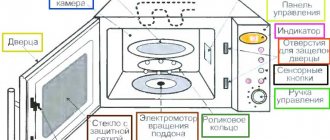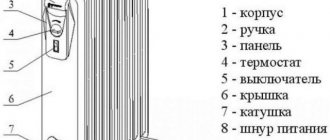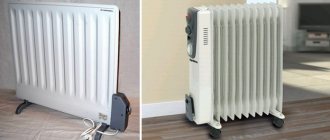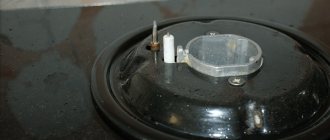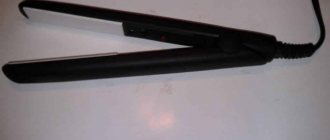Why does a microwave oven not heat food well?
The microwave defrosts food, cooks food, and reheats ready-made meals. Like any household appliance, it can break down during use. If, after turning on, the microwave does not heat up well, figure out what is causing the problem. We will tell you further whether it can be fixed on your own, whether it is worth contacting a specialist or buying a new stove.
- The main reasons why a microwave does not heat well
- Troubleshooting yourself
- Reducing electrical voltage
- Selecting the wrong mode
- The door does not fit tightly to the body
- The device is dirty
- Fuse failure
- Contact the master
- Damage to the timer or control panel
- Inverter failure
- Transformer failure
- Control unit failure
- Magnetron malfunction
- Other reasons
- What to do if the microwave oven heats the dishes and not the food
- Why doesn't my new microwave heat well?
- Conclusion
How much does the repair cost?
If you lack experience, it is better to entrust microwave oven repair to specialists. Depending on the policy of the service center and the complexity of the malfunction, the cost of work may vary.
For example, for a simple repair you will have to pay from 1000 rubles, for work of average complexity - from 3000 rubles, and for solving a complex problem - from 6000 rubles. (at the end of 2022).
Common breakdowns:
- Buttons do not work due to damage to the control panel - from 2600 RUR.
- Malfunction of the magnetron, capacitor - from 2550 rubles.
- Replacement of a fuse due to blown during a power surge - from 2600 RUR;
- Sparking in the device - from 3150 rub.
- The start button on the microwave oven (control unit) is not pressed - from 2900 RUR.
- Damage to the heating element - from 3200 rub.
- Door malfunction - from 2650 RUR.
- Breakdown of the motor for rotating the plate - from 2550 rubles.
- The device does not turn off (timer, switch) - from 2650 rub.
- Microwave oven does not turn on (electrical circuit) - from 2900 rub.
The exact price is determined individually after diagnostics and determination of the malfunction.
The main reasons why a microwave does not heat well
The microwave does not heat food well for external and internal reasons. External ones are eliminated on their own. In case of internal problems, the microwave oven is disassembled or sent to a workshop.
Troubleshooting yourself
There is a category of minor faults. which even a non-specialist can fix at home.
Reducing electrical voltage
When the voltage is less than 220 V, the microwave radiation power drops and the device heats up weakly. If the voltage drops for a long time, the magnetron stops working.
If the problem arose due to unstable voltage in the network, install a stabilizer. If the outlet is overloaded with several devices that operate simultaneously, separate power supply lines are laid for each of the devices.
Selecting the wrong mode
If the oven is set to the Defrost function, the food will not heat to the required level. Therefore, when heating a dish, set the appropriate mode.
The door does not fit tightly to the body
During operation, the device wears out. The fasteners that hold the door in place become loose and wear out. The lock clicks weakly and a gap forms. Cold air from the external environment enters it. This increases the heating time of the food.
To detect a loose fit, a sheet of paper is passed between the door and the body. If it passes freely, then there is a problem. To eliminate it, tighten the connections in the microwave oven or change the latches.
The device is dirty
If the microwave takes a long time to heat due to contamination, it should be cleaned. In order for the household appliance to work stably and for a long time, it is periodically washed with a damp sponge to remove food residues and grease.
Fuse failure
Failed fuses are replaced with new ones. To do this, remove the back cover: damaged ones are black and swollen in shape.
Important! When disassembling a microwave oven, be sure to disconnect it from the electrical network.
Contact the master
More complex breakdowns require certain knowledge and are repaired by professionals.
Damage to the timer or control panel
Occurs during prolonged use of a household appliance or due to careless handling (most often found in Samsung microwave ovens). The timer turns off before the set value, the food does not have time to warm up.
Inverter failure
The inverter is responsible for saving consumed electricity. Its breakdown is a common problem typical for inverter microwaves. The malfunction is repaired at the service center.
Transformer failure
Typical for inexpensive household appliances.
Control unit failure
A specialist disassembles the microwave and checks fuses and diodes. Defective ones are replaced.
Magnetron malfunction
The magnetron powers the microwave oven. It lasts 5-7 years, cheap Chinese devices last about 1 year. During operation, the microwave power decreases and the oven begins to heat poorly. Black spots on the walls indicate a malfunction of the magnetron; the microwave produces a loud buzzing and hissing sound when turned on. To restore emissions, they use sophisticated equipment that is not available in most service centers. Therefore, the magnetron is changed.
Advice. If the warranty period for the device has not expired, it is taken to a service center for repair.
Other reasons
If your microwave oven warms up your food after a time or two, it may be due to:
- Microswitches that do not operate when the door is closed. To fix the problem they are changed.
- Loose contacts on terminal blocks. To solve the problem, the stove is disassembled and the bolts are tightened.
What to do if the microwave oven heats the dishes and not the food
The principle of operation of a microwave oven is that microwaves emitted by a magnetron act on water molecules contained in food. They begin to move chaotically, and the food heats up evenly. Heat from heated food is transferred to the dishes. If during heating the food does not heat up, but the plate becomes hot, this indicates that the dishes are not suitable for a microwave oven.
Special dishes are produced for microwave ovens, which have a symbol that allows use in the oven. If there is no special container, the existing containers are tested. The plate is placed in the microwave, a mug of water is placed next to it and the device is turned on at full power for 1 minute. If the plate is not hot, it means it is suitable for heating food.
Glass containers are suitable for cooking and heating in the microwave. It practically does not heat up. Plates with thick walls made of porcelain, ceramics and earthenware also show themselves.
Do not use thin glass and crystal, porcelain cups with thin walls, or ceramic dishes without glaze - these containers can crack when exposed to microwaves. Do not use gold-plated utensils.
Do not use in microwave oven:
- metal utensils;
- utensils containing metal or having a metallized coating;
- low-melting plastic;
- disposable containers;
- aluminum molds.
Use cheap Chinese microwave containers with extreme caution. When heated, they can melt, releasing substances harmful to the body.
Important! Do not use utensils that cause sparks. This may cause the device to malfunction.
To ensure that the microwave oven works for a long time and without interruption, you need to select the right dishes. If you are using proven plates, and they heat up, but the food does not, this indicates a breakdown of the equipment. For diagnostics and repairs, contact a workshop.
Why doesn't my new microwave heat well?
If a new microwave oven does not heat food well, first of all look to see if the heating mode is selected correctly. Then check the voltage in the network. If the voltage drops slightly, the microwave continues to work, but takes a long time to heat or does not heat the food. Check the voltage in the outlet with a tester. At low levels (less than 220 V), a stabilizer is installed and the network is unloaded from several powerful devices.
Causes may also include broken door locks, a faulty magnetron, blown fuses, or a broken control panel. In these cases, contact the store to have the equipment replaced with a new one or repaired under warranty service.
Principle of operation
In the 20th century, they found a way to use low-frequency radiation to heat objects, and as a result, the magnetron was invented - a device that generates such waves. It receives energy from the network through a power supply. A special fan is used to protect the magnetron from overheating. The electrical circuit contains a fuse to prevent damage to elements in the event of a short circuit and overload in the network.
Microwave doesn't heat well
A microwave is a household appliance that most of us find difficult to live without in the kitchen. It's in the kitchens of our homes and the dining areas of organizations. It is installed in dachas and summer kitchens. This easy-to-use household appliance helps us quickly heat up food and makes cooking quick and convenient. Unfortunately, like any other household appliance, a microwave oven can break down. Everyone knows that when a malfunction occurs in any device, the main thing in eliminating it is to identify its cause.
At the same time, the breakdown can be both serious and completely removable on your own. Today we will pay attention to such a malfunction as poor heating of the microwave and how it can be eliminated.
Mica and waveguide contamination
It is difficult not to notice such a malfunction, since something in the microwave sparks and crackles, but it works. Microwave energy is spent on heating fat and pieces of food that fall on the mica plate and inside the waveguide, as well as creating light and noise effects. Therefore, trying to heat food to the required temperature will not be successful. The problem can be resolved by thoroughly cleaning the pad and waveguide. In case of severe damage, up to the appearance of burnt holes, the plate is replaced. Mica blanks for overlays are sold in radio stores.
Why does a microwave oven not heat food well?
We are sure that each of you has encountered the problem of poor heating of food in a microwave oven. The reason for this “behavior” of a microwave oven can be various minor defects in the device.
Common defects
- The door does not fit tightly to the body. Such a breakdown can occur with a long service life of the stove and wear of its parts - the fasteners become loose, the connections become loose and the lock on the door does not snap as tightly as before;
- Electrical voltage surges or levels that are too low;
- Connecting several devices to one current source at once, which leads to a drop in power in the network and can cause a failure;
- Incorrect choice of operating program;
- Severe contamination of the microwave oven;
- Failure of the fuses installed in it.
All of the above malfunctions are classified as non-serious and can be easily fixed on your own, without contacting a service center. But, along with simple breakdowns, there are also more complex ones; it’s worth saying a few words about them.
Serious damage to the microwave oven
Malfunctions that are difficult to eliminate on your own include those that require certain knowledge from the adjuster and that only professionals or those who are well versed in household appliances can fix. However, despite the difficulty of eliminating them, you should still try to set up a stove at home. The main thing is to act carefully so as not to further damage the device.
Serious microwave oven malfunctions include:
- Breakdown of the timer or control panel usually occurs due to the long service life of the device or careless handling of it.
- For inverter stoves, there is a breakdown of the inverter, which is responsible for the economical consumption of electricity by the appliance. Quite a common failure.
- Transformer failure is a breakdown typical of simple microwave ovens.
- Failure of an electromagnetic lamp occurs in ovens of any type.
- Failure of the magnetron, which is directly responsible for the operation of the entire microwave oven.
Having identified the cause of the microwave malfunction, you can begin to repair it, and the following tips may be useful to you.
How to extend service life
The reason that a microwave oven begins to heat food poorly or stops doing so is almost always due to wear and tear of one or another functional element. Of course, during the warranty period you need to use the services of a service center. But in order for the device to work for a long time even after the expiration of the warranty, and in order to avoid having to do repairs yourself in order to save money, you need to avoid actions that shorten the service life.
- It is better not to use metal utensils and generally avoid getting metal objects (forks, spoons, etc.) into the oven. To ensure that food is heated while using the microwave, and the dishes themselves remain cold, you need to avoid materials such as: crystal of different thicknesses and with different thicknesses, porcelain and glass with patterns of gold paint, disposable plastic tableware, ceramics without a protective glaze, aluminum molds for baking.
- Do not turn on the device idle - without food or products.
- It is also undesirable to heat liquids and raw eggs in containers that “explode” when heated.
- Failure of the touch panel is also a common malfunction, so it is advisable not to put too much pressure on it or get it dirty. For many ovens from well-known manufacturers, a breakdown of the touch panel is displayed on the display with a service code, for example, SE (each manufacturer uses different designations).
To avoid problems with microwave oven repair, you need to pay attention to devices manufactured by reputable manufacturers. No matter how much these models cost compared to their Chinese counterparts, the quality of the build and the materials used pay off in the future. It is difficult to repair a cheap “nameless” device with your own hands because it is not easy to find the necessary parts for it, and the technical documentation does not always correspond to reality. And craftsmen who encounter such a device may ask for a lot of money for repairs, since this will also be problematic for them.
Troubleshooting a microwave oven yourself
Let's take a closer look at troubleshooting methods for microwave ovens:
- The door is broken or does not fit tightly. Before starting repairs, you need to determine whether this very loose fit really exists. They do the verification by placing a simple sheet of paper in the gap between the door and the main body of the microwave. If the paper passes freely, then the door does not fit tightly. Eliminate this malfunction by tightening the connection. This is done where the castle is located. If necessary, tighten it tighter.
- Electricity surges - installing a stabilizer will help eliminate this malfunction, but if poor heating of the microwave is the result of several devices connected to one current source, then in this case, in order to eliminate the malfunction, you will have to install an additional socket.
- When talking about an incorrectly selected mode, we should mean choosing the defrost mode instead of the heating mode. If you use this low-power mode to reheat food, the food will naturally heat up very poorly. We solve the problem by choosing the right program.
- If the cause of poor heating is severe contamination, you will have to clean the microwave. The washing procedure must be carried out more often, then the oven will work more stable and longer.
- If the fuses have blown, we replace them. They are located under the rear cover of the HF. At the same time, a non-working fuse is very easy to identify - it will have a black color and a swollen shape, so by removing the cover, as a rule, it is always clear what to change. The fuse itself can be found in almost any electrical goods store or service centers for household appliances.
- Malfunction of the control unit - requires a detailed study of fuses and diodes to determine their performance. If faulty ones are found, they are replaced.
- If the inverter or transformer breaks down, then, in this case, it is better not to do anything on your own and immediately contact a specialist. Only he in this situation is able to determine the causes of the breakdown and replace the parts with new ones.
- The most difficult thing to deal with is a magnetron failure. It is used to heat the oven. If it is faulty, black marks will be visible on the walls of the microwave, and the oven itself will produce loud, hissing or buzzing sounds when turned on. To determine whether the magnetron is really faulty, you need to use an ohmmeter - if the element does not ring, then only replacing it will help eliminate the fault. The magnetron must be replaced by a specialist.
Thus, any reason that leads to a decrease in the heating capacity of the microwave can be eliminated, both on our own and by the forces of the technicians from the service center. The main thing, if you decide to repair it yourself, is to do everything extremely carefully, so that after your intervention a number of others are not added to one malfunction.
Cause of microwave oven failure
The design of MVPs from different manufacturers is practically the same. Korean LG, Samsung, Daewoo, Japanese Panasonic, Supra, Sharp or the British brand Scarlett ") have a similar device. They differ only in small nuances: design, color, control panel, number of bolts. Therefore, our article is suitable for diagnosing and repairing any microwave oven. The food in the oven is heated by electromagnetic radiation generated by a magnetron. Therefore, it is logical to assume that if the stove does not heat, it is the culprit. But since the operation of the magnetron depends on many other parts and systems, you will have to check them too.
The microwave has stopped heating or is taking a long time to heat - what’s the problem?
- The network voltage is less than 220 W. A slight voltage drop may not be noticeable from the outside. The appliance, as usual, rotates the tray, lights up, but does not heat the food well or does not heat the food at all. If your assistant heats up every once in a while, the reason may lie in unstable voltage. Check the voltage in the outlet with a tester.
A reading below 220 W indicates an unbalanced, overloaded network or poor-quality transmission line; problems at the substation are also possible. Network unloading will eliminate this problem - do not turn on many powerful devices at the same time. Install an uninterruptible power supply. If the measures taken do not help stabilize the voltage, contact your electricity supplier: the problem may be a damaged power line.
- Magnetron malfunction.
A malfunction of the magnetron is indicated by sounds atypical for MVP. The device makes noise, hums, buzzes louder than usual, but does not heat well or does not perform the heating function at all. Check the inner walls of the oven - the presence of carbon deposits is a sign that this part has broken. A broken magnetron cannot be detected by a multimeter; it can be replaced by carefully following safety rules.
- The door lock is broken.
If there is no blocking, the heating process will not start. So the developers made sure that microwaves do not harm you through the open door of the device. If the oven is not working, check the shutter mechanism and door hinges. This minor damage is easily fixed by replacement.
- The fuses (or one of them) have blown.
If the microwave begins to heat worse, but the tray is spinning, check the fuses. To get to the fuse, you will have to disassemble the housing. A burnt-out one differs from a serviceable one by the presence of carbon deposits on the glass bulb and a broken spring.
- The capacitor and diode have failed. If the capacitor breaks down, the microwave beeps, heats up weakly, and the ohmmeter needle remains motionless when the signal is dialed. A diode failure causes increased buzzing during the process, and the oven heats poorly. The capacitor and diode must be replaced, and in some cases repaired (for experienced craftsmen).
- The control panel is broken.
It happens that the buttons “stick”, the contacts come loose, and the microwave does not turn on. Try disassembling the control panel, checking the contacts, cleaning the keyboard.
Some of these breakdowns are easy to fix on your own; in difficult cases, you will need the help of a specialist or even purchasing a new microwave.
Do-it-yourself repairs require certain skills and compliance with safety precautions:
- Always unplug equipment before making repairs.
- Always wear special dielectric gloves.
- Use tools with insulated handles.
- Do not operate a disassembled, damaged, open or empty microwave.
- Discharge the capacitor before repairing. For example, use a screwdriver on the housing (up to 1000 volts) or connect the capacitor contacts with pliers if the power is above 1000.
- Do not leave metal objects or tools inside the oven.
- Do not make holes in the housing.
What to do if the MVP heats the dishes and not the food
If your assistant heats the plate itself instead of the contents, you most likely chose the wrong cookware. Microwave dishes should not contain metal, many water molecules, non-heat-resistant plastic, or melanin. These materials interact with electromagnetic waves, heat up, melt, and shiny metal objects reflect particles, creating an electric arc that can cause a fire or short circuit. Therefore, purchase special heat-resistant dishes marked for microwave use.
Does the microwave heat the dishes, not the food? Read more about the topic here.
We have listed the main reasons for such a problem as lack of heating in the microwave. Remember safety precautions. We wish you a successful and easy repair!
Repair rules
Unqualified repairs often lead to negative consequences in the form of health problems or worsening microwave malfunctions.
To eliminate such moments, follow these rules:
- Always relieve tension before carrying out repair work. To do this, remove the cord from the outlet.
- Use protective gloves made of dielectric material that can protect against voltages up to 1000 V.
- Perform repairs/diagnosis using tools that have insulated handles.
- Do not apply voltage to the microwave after parts have been removed, without food, with the door open, or if there is a suspected malfunction.
- Discharge the capacitor before checking, removing or replacing. For this
- Be careful and check the microwave oven for metal objects inside after repair. ATTENTION: It is normal for a spark to jump between the housing and the capacitor.
- Do not drill holes in the case, as this may damage the device.
Why problems might arise
The main reasons why the microwave stopped heating may be as follows:
- The network voltage has dropped. Sometimes there are power outages and the voltage drops by 20 V. In such cases, the dishes only heat up around the edges, and the food remains cold.
- Network overload. Two high-power devices are simultaneously connected to one power source. This could have a negative impact on the performance of one of them.
- Inappropriate mode set. Most often, this is the “defrost” mode, in which the food does not warm up completely.
- The door is faulty. Perhaps the reason is a broken latch.
These are the simplest options that do not require repairs. But there are more compelling reasons why the microwave does not heat well:
- the timer or control unit is damaged;
- the transformer (high-voltage, light) fuse has blown;
- failure of the electromagnetic lamp, or magnetron;
- pass capacitor is broken;
- The multiplier, consisting of 2 interdependent parts, has failed - a high-voltage diode and a condensate.
It is difficult for a non-professional to determine which parts require replacement. To understand what the problem is, you need to know about possible malfunctions.
Useful tips
In order not to waste time determining the reason why the Daewoo microwave stopped heating, you need to adhere to the basic rules for operating the equipment:
- toxic cleaning powders can get into food or damage the magnetron;
- dirt and grease from the body can be removed with a damp cloth;
- to remove dirt from the door, use a damp sponge and wipe the insulation;
- It is advisable to wipe touch panels with dry wipes;
- to get rid of an unpleasant odor, heat a glass of water with a slice of lemon;
- Reheat food by covering it with a special plastic lid to keep the walls of the heat chamber clean.
If the enamel inside the microwave has peeled off, be sure to paint over the damaged areas.
Basic faults
If the microwave does not heat well, hums, or makes other strange sounds, it means the elements inside are damaged. You can detect and correct the cause yourself if you know the main signs of damage to a particular element of the microwave oven. First of all, you need to unplug the microwave oven and carefully study the instructions for it. The manual should contain a diagram of the device, where all the main elements are indicated.
Fuse
First of all, you need to unscrew the back cover. The fuse is a metal thread enclosed in a glass or ceramic tube. There are several of them in microwaves - most often 2.
You need to see if the fuses are intact or not. Faulty ones are immediately noticeable: they swell or turn black, the thread bends. If there is nothing suspicious in appearance, then you need to do a resistance check. To measure you will need an ohmmeter.
The fuse needs to be replaced with a new one. In order not to make a mistake when purchasing, you need to take the old sample with you. It is undesirable to try to solve the problem in some other way - the likelihood of a fire if the fuse is damaged is quite high
Capacitor
One of the most common reasons why food is not warm enough is a faulty condenser. This breakdown is the cause of the noise and buzzing of the microwave. To check the condition of the capacitor you will need an ohmmeter. First you need to wait until the capacitor is completely discharged. What the measurement results indicate:
- the resistance is weak - this means the part is faulty;
- the arrow of the measuring device does not move - there are no contacts of the container;
- if the arrow freezes at the “∞” sign or deviates slightly from this mark, it means the capacitor is working.
The faulty capacitor must be replaced.
High voltage diode
It is not easy to determine a diode malfunction at home due to the complexity of the resistance measurement procedure. You can verify the malfunction using a high-voltage capacitor, which is connected to a diode. If the condensate remains cold, the diode is faulty. Another indicator of a malfunction is a blown fuse . A strong hum when turned on and while the microwave oven is heating food also indicates a diode malfunction. The element needs to be replaced.
Magnetron
The purpose of the magnetron is to generate a high-frequency electric field, due to which the products inside the chamber are heated. The feed-through capacitors of the EM lamp may be damaged. To verify this, you need to open the housing of the electromagnetic lamp. Then you need to measure the voltage in the transformer. Any deviation from the 220 V mark indicates a malfunction. A broken element must be replaced.
Magnetron malfunction is the most common reason why a microwave oven does not heat. A magnetron failure can be recognized by a strong hum and noise during operation of the microwave. There are no signs of burnout (the lamp glows inside, there are no sparks). Then you need to open the case and conduct a visual inspection of the magnetron. If there is no visible damage or a specific smell, then you need to use an ohmmeter. If the magnetron has burned out, then you need to buy a new one, exactly the same as the old one.
A closer look at the design
A microwave can hardly be called the simplest device, since it contains a huge number of elements. However, it is not necessary to know most of them, since the fault for the failure of the microwave oven to work lies with the main working units. Despite the large assortment of models, their layout is practically the same. Any microwave oven always includes:
- fan;
- waveguide;
- diode;
- capacitor;
- magnetron;
- fuse;
- thermal fuse;
- transformer;
- electronic programmer.
The magnetron in a microwave is the main working element that generates waves that heat food. It requires high voltage, so 220V is first fed to a transformer, which turns it into 2000W. The diode and capacitor behind it double the power. Thus, 4000 W is already supplied to the magnetron, then the main work of the microwave begins - heating.
The generator is protected from power supply problems by a fuse: if it blows, the microwave oven is de-energized. Microwaves enter the working chamber through a waveguide. There they concentrate on the food container, reflecting off the walls. The magnetron is protected from overheating by the fan, and the warm air entering the chamber only speeds up the cooking process.
It is helped by a thermal fuse, which blows out in case of any violation - if the “hair dryer” fails, or if it is not working efficiently enough. The programmer is responsible for the temperature regime and heating duration; it includes a timer and sensor.
All breakdowns are usually associated with this set of key elements. Therefore, the culprits for the malfunction of any microwave are first looked for among them. However, microwave ovens also have other “weak points”. But in this case, repairs often do not present any particular difficulties.
What to do if the microwave does not heat
The action depends on why the microwave is working but not heating. If these are external reasons (for example, voltage surges, faulty sockets), then eliminating them is extremely simple. First of all, you need to unplug the microwave. Then you need to turn off another powerful device if it is connected to the same power source.
If this is not possible - for example, a refrigerator is plugged into the same outlet - then you need to find a new place for the microwave oven and plug it into a different outlet. This also needs to be done if the serviceability of the socket is suspicious (smoke, crackling, smell, traces of burning on the plastic case).
If the microwave does not heat because the wrong mode is set, you should switch it and try to reheat the food again. If the reason is related to the door, you need to carefully inspect the latches. They may be broken and need to be replaced with new ones. If everything is in order with the latches, it is enough to slam the door tightly (but do not use force, otherwise you can break the latching mechanism or even the door itself).
If the microwave works but does not heat, the reason is most often a faulty part. When the functioning of the microwave is disrupted, the reasons must be identified as soon as possible to avoid fire. Signs of damage - noise, hum, crackling during operation, lamp or lamp turning off.
You can diagnose it yourself. To do this, you need to turn off the power to the oven and wait until it is completely discharged. Then, after studying the instructions, you need to open the case and conduct a thorough inspection of the parts. It is worth measuring the voltage with an ohmmeter. If something breaks, you need to remove the faulty part and replace it with a new one.
Sometimes the oven may turn on and off on its own during operation. This often indicates that the fan is faulty: either the relay is broken, or the ventilation holes are clogged. If the ventilation system fails, it is necessary to replace the fan with a new one. If this is not done, the oven will begin to overheat, and dust will penetrate into the inside of the device. Blockages are possible, there is a high probability of complete failure of the device, and there is a high risk of fire.
If, after replacing the damaged element, the microwave oven still does not work, then professional help is needed. Without special skills, it is unsafe to carry out complex microwave repairs yourself; only a master can do this.
The refrigerator constantly works and does not turn off - all the reasons for the malfunction
What to do if your phone stops charging from the charger - the main reasons
Why is the LED lamp blinking?
Why can an LED lamp glow when the switch is off?
Why does the plug, RCD or automatic circuit breaker knock out when turning on or during operation of the washing machine?
Which microwave ovens are the best and most reliable - choosing a microwave oven
